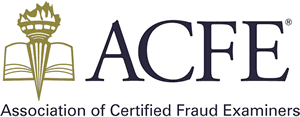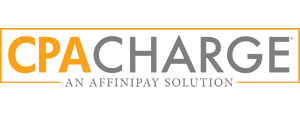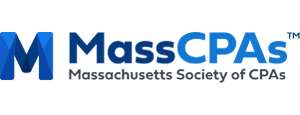Feature Articles
Tax Tips |
What To Do if You Missed the Tax Deadline
Tuesday, April 18, 2023, was the deadline for most taxpayers to file their income tax returns. If you haven’t filed a 2022 return yet, it’s not too late.
First, gather any information related to income and deductions for the tax years for which a return is required to be filed, then call the office. If you are owed a refund, the sooner you file, the sooner you will get it. If you owe taxes, you should still file and pay as soon as you can, because it will stop the accrual of interest and penalties.
Are You Eligible for Penalty Relief?
Some taxpayers filing after the deadline may qualify for penalty relief. Those charged a penalty may contact the IRS by calling the number on their penalty notice and explaining why they couldn’t file and pay on time.
For 2022 tax returns due April 18, 2023, some taxpayers automatically qualify for extra time to file and pay taxes due without penalties and interest, including:
- Some disaster victims. Individuals living or working in a federally declared disaster area have more time to file and pay what they owe.
- Taxpayers outside the United States. U.S. citizens and resident aliens who live and work outside the U.S. and Puerto Rico, including military members on duty who don’t qualify for the combat zone extension, may qualify for a two-month filing and payment extension.
- Members of the military who served or are currently serving in a combat zone may qualify for an additional extension of at least 180 days to file and pay taxes.
- Support personnel in combat zones or a contingency operation in support of the Armed Forces may also qualify for a filing and payment extension of at least 180 days.
- The military community can also file their taxes using MilTax, a free tax resource offered through the Department of Defense. Eligible taxpayers can use MilTax to file a federal tax return electronically and up to three state returns for free.
If You Don’t File, You May Miss Out on a Refund
Every year, more than 1 million taxpayers choose not to file a return and miss out on receiving a refund due to potential refundable tax credits, according to the IRS. The most common examples of these refundable credits are the Earned Income Tax Credit and the Child Tax Credit. For example, the IRS estimates nearly 1.5 million people did not file a tax return for 2019 and missed out on an estimated median refund of $893 (i.e., half of the refunds would have been more than $893, and half would have been less).
Taxpayers usually have three years to file and claim their tax refunds. If they don’t file within three years, the money becomes the property of the U.S. Treasury. However, the three-year window for 2019 unfiled returns was postponed to July 17, 2023, due to the COVID-19 pandemic emergency.
How To Make a Payment
If you owe tax, there are several ways to make a payment:
Check, money order or cashier’s check. If you are paying along with filing your 2022 income tax return, you should not staple or paperclip the payment to the return. If you are paying an income tax liability without an accompanying income tax return, include Form 1040-V, Payment Voucher, with the payment. Mail the payment to the correct address by state or form. Indicate on the check memo line the specific tax year to which the IRS should apply the payment.
Direct Pay. For individuals, IRS Direct Pay is a fast and free way to pay directly from your checking or savings account.
Major credit card or debit card. There is no IRS fee for credit or debit card payments, but processing companies may charge a convenience or flat fee.
Cash Payments. Individual taxpayers who do not have a bank account or credit card and need to pay their tax bill using cash can make a cash payment at participating PayNearMe Company payment locations (places like 7-Eleven). Individuals wishing to take advantage of this payment option should visit the IRS.gov payments page, select the cash option in the “Other Ways You Can Pay” section, and follow the instructions.
What To Do if You Can’t Pay in Full
Taxpayers who cannot pay the full amount owed on a tax bill are encouraged to pay as much as possible. By paying as much as possible now, the interest and penalties owed will be less than if you pay nothing. However, if you continue to ignore your tax bill, the IRS may take collection action.
The IRS will work with taxpayers suffering financial hardship. Taxpayers with a history of filing and paying on time often qualify for administrative penalty relief. A taxpayer usually qualifies if they have filed and paid promptly for the past three years and meet other requirements.
Based on individual circumstances, a taxpayer could qualify for an extension of time to pay, an installment agreement, a temporary delay, or an offer in compromise.
Most taxpayers can set up a monthly payment plan or installment agreement that gives them more time to pay. However, penalties and interest will continue to be charged on the unpaid portion of the debt throughout the duration of the installment agreement/payment plan. You should pay as much as possible before entering into an installment agreement.
It is important to review all your options. For example, a credit card payment might make sense if the interest rates would be lower than the combination of penalties and interest imposed by the Internal Revenue Code. Don’t hesitate to call if you have questions about these options.
What Happens if You Don’t File a Past Due Return
It’s important to understand the ramifications of not filing a past-due return if taxes are due and the steps that the IRS will take. Taxpayers who continue not to file a required return and fail to respond to IRS requests for a return may be considered for various enforcement actions, including substantial penalties and fees.
Need Help Filing Your 2022 Tax Return?
If you haven’t filed a tax return yet, don’t delay. Call the office today to schedule an appointment as soon as possible.
Changing Jobs? Don’t Forget About Your 401(K)
One of the most important questions you face when changing jobs is what to do with the money in your 401(k) plan. Making the wrong move could cost you thousands of dollars or more in taxes, penalties and lower returns.
Consequences of Cashing Out
Let’s say you work five years at your current job. For most of those years, you’ve had the company take a set percentage of your pretax salary and put it into your employer’s plan. Now that you’re leaving, what should you do?
The first rule of thumb is to leave it alone. Resist the temptation to cash out. The worst thing you can do when leaving a job is to withdraw the money and put it in your bank account. Here’s why:
If you decide to have your distribution paid to you, the plan administrator will withhold 20 percent of your total for federal income taxes. So if you had $100,000 in your account, you’re already down to $80,000.
Furthermore, if you’re younger than 59 1/2, you’ll generally face a 10 percent penalty for early withdrawal come tax time. Now you’re down another 10 percent from the top line to $70,000.
There is an exception to the 10 percent early withdrawal tax penalty for 401(k) plans if you separate from service during or after the year you reach age 55 (age 50 for public safety employees of a state, or political subdivision of a state, in a governmental defined benefit plan). IRAs, SEPs, SIMPLE IRAs, and SARSEPs do not qualify for the exception.
In addition, because distributions are taxed as ordinary income, at the end of the year, you’ll have to pay the difference between your tax bracket and the 20 percent already taken out. For example, if you’re in the 32 percent tax bracket, you’ll still owe 12 percent, or $12,000, which lowers the amount of your cash distribution to $58,000. (If your tax bracket is less than 20%, you may qualify for a refund, depending on your overall tax liability for the year compared to what was withheld or paid in estimated taxes for the year.)
But that’s not all. You also have to pay any applicable state and local taxes. Between taxes and penalties, you could end up with little over half of what you saved, short-changing your retirement savings significantly. Finally, you will miss out on any future tax-deferred growth those assets would have produced had they remained in the retirement plan.
What Are the Alternatives?
If your new job offers a retirement plan, the easiest course of action is to roll your account into the new plan. A “rollover” is relatively painless to do. Contact the 401(k) plan administrator at your previous job, who should have all the necessary forms.
The best way to roll funds over from an old 401(k) plan to a new one is to use a direct transfer. With the direct transfer, you never receive a check, you avoid all the taxes and penalties mentioned above, and your savings will continue to grow tax-deferred.
Many employers require that you work a minimum length of time before you can participate in their 401(k) plan. If that is the case with your new employer, one solution is to keep your money in your former employer’s 401(k) plan until you are eligible for the new one. Then you can roll it over into the new plan. Most plans let former employees leave assets in their old plan for several months or longer.
If you’re not happy with the fund choices your new employer offers, you might opt for a rollover IRA instead of your company’s plan. You can then choose from hundreds of funds and have more control over your money. But again, to avoid the withholding hassle, use direct rollovers.
60-Day Rollover Period
If you have your former employer make the distribution check out to you, the Internal Revenue Service considers this a cash distribution. The check you get will have 20 percent taken out automatically from your vested amount for federal income tax.
But don’t panic. You have 60 days to roll over the lump sum (including the 20 percent) to your new employer’s plan or into a rollover IRA. Then you won’t owe the additional taxes or the 10 percent early withdrawal penalty and, depending on your overall tax liability for the year, you might receive a refund of some or all of the 20% withheld. But keep in mind that in your rollover you will have to make up for the withheld 20% with funds from another source. Otherwise, the withheld amount will be treated as a distribution and subject to any applicable taxes and penalties.
Leave It Alone
If your vested account balance in your 401(k) is more than $5,000, you can usually leave it with your former employer’s retirement plan. Your balance will keep growing tax-deferred.
However, if you can’t leave the money in your former employer’s 401(k) and your new job doesn’t have a 401(k), your best bet is a direct rollover into an IRA. The same applies if you’ve decided to go into business for yourself. You can still continue to enjoy tax-deferred growth.
Questions about IRA rollovers? Help is just a phone call away.
What Are Estimated Tax Payments?
Estimated tax is the method used to pay tax on income not subject to withholding, such as income from self-employment, interest, dividends, alimony, rent, gains from the sale of assets, prizes, and awards. You also may have to pay an estimated tax if the income tax being withheld from your salary, pension, or other income is insufficient. Here’s what you should know about estimated tax payments:
Filing and Paying Estimated Taxes
Both individuals and business owners may need to file and pay estimated taxes, which are paid quarterly. The first estimated tax payment of the year is ordinarily due on the same day as your federal tax return is due.
If you are filing as a sole proprietor, partner, S corporation shareholder, or self-employed individual and expect to owe tax of $1,000 or more when you file your return, you generally have to make estimated tax payments. . If you are filing as a corporation and expect it to owe tax of $500 or more when you file its return, you generally have to make estimated tax payments for your corporation..
If you had a tax liability for the prior year, you might have to pay estimated tax for the current year. but, if you receive salaries and wages, you can avoid having to pay estimated tax by asking your employer to withhold more tax from your earnings. To do this, file a new Form W-4 with your employer. There is a special line on Form W-4 for you to enter the additional amount you want your employer to withhold. You had no tax liability for the prior year if your total tax was zero or you did not have to file an income tax return.
Special rules apply to farmers, fishermen, certain household employers, and certain higher taxpayers. Please call the office for assistance if any of these situations apply to you.
Who Does Not Have to Pay Estimated Tax
You do not have to pay estimated tax for the current year if you meet all three of the following conditions:
- You had no tax liability for the prior year
- You were a U.S. citizen or resident for the whole year
- Your prior tax year covered a 12-month period
Calculating Estimated Taxes
To figure out your estimated tax, you must calculate your expected adjusted gross income, taxable income, taxes, deductions, and credits for the year. If you estimated your earnings too high, complete another Form 1040-ES, Estimated Tax for Individuals, worksheet to re-figure your estimated tax for the next quarter. If you estimated your earnings too low, again complete another Form 1040-ES worksheet to recalculate your estimated tax for the next quarter.
Try to estimate your income as accurately as possible to avoid penalties due to underpayment. Most taxpayers will avoid this penalty if they owe less than $1,000 in tax after subtracting their withholding and credits or if they paid at least 90 percent of the tax for the current year or 100 percent of the tax shown on the return for the prior year, whichever is smaller.
When figuring out your estimated tax for the current year, it may be helpful to use your income, deductions, and credits for the prior year as a starting point. Use your prior year’s federal tax return as a guide, and use the worksheet in Form 1040-ES to figure your estimated tax. However, you must adjust to any changes in your situation as well as recent tax law changes.
Estimated Tax Due Dates
For estimated tax purposes, the year is divided into four payment periods, each with a specific payment due date. For the 2023 tax year, these dates are April 18, June 15, and September 15, 2023, and January 16, 2024.
If you file your 2023 tax return by January 31, 2024, and pay the entire balance due with your return, you do not have to pay estimated taxes in January.
If you do not pay enough tax by the due date of each of the payment periods, you may be charged a penalty even if you are due a refund when you file your income tax return.
Electronic Federal Tax Payment System
The easiest way for individuals and businesses to pay their estimated federal taxes is to use the Electronic Federal Tax Payment System (EFTPS). Make ALL of your federal tax payments, including federal tax deposits (FTDs), installment agreements, and estimated tax payments, using EFTPS. If it is easier to pay your estimated taxes weekly, bi-weekly, monthly, etc., you can, as long as you have paid enough by the end of the quarter. Using EFTPS, you can access a history of your payments to know how much and when you made your estimated tax payments.
Don’t hesitate to call if you have any questions about estimated tax payments or need assistance setting up EFTPS.
Saving for Education: Understanding 529 Plans
Many parents are looking for ways to save for their child’s education, and a 529 Plan is an excellent way to do so. Even better is that, thanks to the passage of tax reform legislation in 2017, 529 plans are now available to parents wishing to save for their child’s K-12 education as well as college (two and four-year programs) or vocational school.
The SECURE Act of 2019 expanded the 529 Plan to include fees, books, supplies, and equipment for apprenticeship programs and repayment of principal and interest on student loan debt for the designated beneficiary or the beneficiary’s sibling, up to a lifetime limit of $10,000.
You may open a Section 529 plan in any state, and there are no income restrictions for the individual opening the account. Contributions, however, must be in cash, and the total amount must not be more than is reasonably needed for higher education (as determined initially by the state). A minimum investment may be required to open the account, such as $25 or $50.
Each 529 Plan has a designated beneficiary (the future student) and an account owner. The account owner may be a parent or another person and typically is the principal contributor to the plan. The account owner is also entitled to choose (and change) the designated beneficiary.
Neither the account owner nor beneficiary may direct investments. Still, the state may allow the owner to select a type of investment fund (e.g., fixed-income securities) and change the investment annually as well as when the beneficiary is changed. The account owner decides who gets the funds (can pick and change the beneficiary) and is legally allowed to withdraw funds at any time, subject to tax and penalties (more about this topic below).
Unlike other tax breaks for higher education funding, such as the American Opportunity and Lifetime Learning Tax Credits, 529 plans aren’t limited to funding only tuition. Room, board, lab fees, books, and supplies can be purchased with funds from your 529 Savings Account. However, individual state programs could have a more narrow definition, so check with your particular state.
Tax-Free Distributions
Distributions from 529 plans are tax-free as long as they are used to pay qualified higher-education expenses for a designated beneficiary. Distributions are tax-free even if the student claims the American Opportunity Credit, Lifetime Learning Credit, or tax-free treatment for a Section 530 Coverdell Education Savings Account (ESA) distribution – provided the 529 plan distributions aren’t covering the same specific expenses.
Qualified expenses include tuition, required fees, books, supplies, equipment, and special needs services. Room and board also qualify for someone who is at least a half-time student. Also, starting in 2018, qualified expenses include up to $10,000 in annual expenses for tuition in connection with enrollment or attendance at an elementary or secondary public, private, or religious school.
Qualified expenses also include computers and related equipment used by a student while enrolled at an eligible educational institution; however, software designed for sports, games, or hobbies does not qualify unless it is predominantly educational in nature.
Federal Tax Rules
Income Tax. Contributions made by the account owner or other contributor are not deductible for federal income tax purposes, but many states offer deductions or credits. Earnings on contributions grow tax-free while in the plan. Distributions for a purpose other than qualified education are taxed to the one receiving the distribution. In addition, the taxable portion of the distribution will incur a 10 percent penalty, comparable to the 10 percent penalty that applies to Coverdell ESAs. Also, the account owner may change the beneficiary designation from one to another in the same family. Funds in the account roll over tax-free for the benefit of the new beneficiary.
Gift Tax. For gift tax purposes, contributions are treated as completed gifts even though the account owner has the right to withdraw them – thus, they qualify for the up-to-$17,000 annual gift tax exclusion in 2023 ($16,000 in 2022). One contributing more than $17,000 may elect to treat the gift as made in equal installments over that year and the following four years so that up to $85,000 can be given tax-free in the first year.
Estate Tax. Funds in the account at the designated beneficiary’s death are included in the beneficiary’s estate – another odd result since those funds may not be available to pay the tax. Funds in the account at the account owner’s death are not included in the owner’s estate, except for a portion where the gift tax exclusion installment election is made for gifts over $17,000 ($16,000 in 2022). Here is an example: If the account owner made the election for a gift of $85,000 ($80,000 in 2022), a part of that gift is included in the estate if the owner dies within five years.
A Section 529 plan can be an especially attractive estate-planning move for grandparents. There are no income limits for contributing, and the account owner giving up to $85,000 ($80,000 in 2022) avoids gift tax and estate tax by living five years after the gift, yet has the power to change the beneficiary.
State Tax. State tax rules are all over the map. Some reflect the federal rules, and some are quite different. For an overview of each state’s 529 plan, see: College Savings Plans Network (CSPN).
Looking Ahead
Starting in 2024, 529 college savings plans maintained for at least 15 years can be rolled over to a Roth IRA. Any contributions (and earnings on those contributions) to the 529 plan made within the last five years are not eligible. The rollover must be trustee to trustee, with a lifetime limit of $35,000 per account beneficiary. Rollovers are subject to Roth IRA annual contribution limits.
Seek Professional Guidance
Considering the differences among state plans, the complexity of federal and state tax laws, and the dollar amounts at stake, please call the office and speak to a tax and accounting professional before opening a 529 plan.
Check the Status of a Tax Refund Using This IRS Tool
Taxpayers can start checking their tax refund status 24 hours after e-filing their 2022 federal income tax return. The easiest and most convenient way to do this is by using the “Where’s My Refund?” tool on the IRS website. The tool provides a personalized refund date after the return is processed and a refund is approved.
There are two ways to access the “Where’s My Refund?” tool – visiting IRS.gov or downloading the IRS2Go app. To use the tool, taxpayers will need the following information:
- Their Social Security number or Individual Taxpayer Identification Number
- Tax filing status
- The exact amount of the refund claimed on their tax return
The tool displays progress in three phases: when the return was received, when the refund was approved, and when the refund was sent. When the status changes to approved, it means that the IRS is preparing to send the refund as a direct deposit to the taxpayer’s bank account or directly to the taxpayer in the mail, by check, to the address used on their tax return.
The IRS updates the “Where’s My Refund?” tool once a day, usually overnight, so taxpayers don’t need to check the status more often than that. Calling the IRS won’t speed up a tax refund. The information available on “Where’s My Refund?” is the same information available to IRS telephone assistors.
Taxpayers should remember to allow time for their financial institution to post the refund to their account or for the refund to be delivered by mail. As always, please contact the office with any questions about tax refunds, tax returns, or other tax matters.
IRS Tax Debt Could Affect Passport Renewal
As a reminder, individuals with “seriously delinquent tax debts” could have their passport application or renewal denied or even have their current passport revoked, courtesy of the Fixing America’s Surface Transportation (FAST) Act, signed into law in December 2015. These provisions went into effect in February 2018.
Background
The FAST Act requires the IRS to notify the State Department of taxpayers the IRS has certified as owing a seriously delinquent tax debt. It also requires the State Department to deny their passport application or renewal. In certain instances, the State Department may revoke their passport.
Taxpayers affected by this law are those with seriously delinquent tax debt, generally, an individual who owes the IRS more than $51,000 in back taxes, penalties, and interest for which the IRS has filed a Notice of Federal Tax Lien and the period to challenge it has expired, or the IRS has issued a levy.
What Taxpayers Can Do
Taxpayers can avoid having the IRS notify the State Department of their seriously delinquent tax debt by doing the following:
- Paying the tax debt in full
- Paying the tax debt timely under an approved installment agreement,
- Paying the tax debt timely under an accepted offer in compromise,
- Paying the tax debt timely under the terms of a settlement agreement with the
- Department of Justice,
- Having requested or have a pending collection due process appeal with a levy, or
- Having collection suspended because a taxpayer has made an innocent spouse election or requested innocent spouse relief.
However, a taxpayer’s passport won’t be at risk under this program if an individual:
- Is in bankruptcy
- Is identified by the IRS as a victim of tax-related identity theft
- Has an account that the IRS has determined is currently not collectible due to hardship
- Is located within a federally declared disaster area
- Has a request pending with the IRS for an installment agreement
- Has a pending offer in compromise with the IRS
- Has an IRS accepted adjustment that will satisfy the debt in full
For taxpayers serving in a combat zone and who also owe a seriously delinquent tax debt, the IRS postpones notifying the State Department, and the individual’s passport is not subject to denial during this time.
Payment Options for Delinquent Taxes
Taxpayers who are behind on their tax obligations should come forward and pay what they owe or enter into a payment plan with the IRS and may qualify for one of several relief programs, including the following:
- Taxpayers can request a payment agreement with the IRS by filing Form 9465, Installment Agreement Request. Taxpayers can download this form from IRS.gov and mail it with a tax return, bill, or notice.
- Some taxpayers may be eligible to use the online payment agreement to set up a monthly payment agreement for up to 72 months.
- Financially distressed taxpayers may qualify for an offer in compromise, an agreement between a taxpayer and the IRS that settles the taxpayer’s tax liabilities for less than the full amount owed. The IRS looks at the taxpayer’s income and assets to determine the taxpayer’s ability to pay.
If you owe back taxes and are worried your passport could be revoked or your application or renewal be denied because of unpaid taxes, please call.
Certain Taxpayers May Need to File an Amended Return
Taxpayers who reported certain 2022 state payments or state tax refunds as taxable income may benefit from filing an amended tax return. Affected taxpayers include those who filed before February 10, 2023, and meet certain requirements. Taxpayers who used a tax professional should consult with them to determine whether an amended return is necessary.
Background
Details clarifying the federal tax status regarding special payments made to taxpayers by 21 states in 2022 were clarified by the IRS on February 10, 2023. During their review, it was determined that the IRS would not challenge the taxability of state payments related to general welfare and disaster relief in the interest of sound tax administration and other factors. As a result, taxpayers in many states did not need to report these payments on their 2022 federal tax returns and could be owed a refund for taxes paid.
Which Taxpayers are Affected?
Taxpayers in the following states do not need to report these state payments on their 2022 tax return: Alaska (applies only to the special supplemental Energy Relief Payment), California, Colorado, Connecticut, Delaware, Florida, Hawaii, Idaho, Illinois, Indiana, Maine, New Jersey, New Mexico, New York, Oregon, Pennsylvania, and Rhode Island.
Also, many people in Georgia, Massachusetts, South Carolina, and Virginia will not include special state 2022 tax refunds as income for federal tax purposes if they meet certain requirements. For these individuals, state payments will not be included for federal tax purposes if the payment is a refund of state taxes paid and the recipient either claimed the standard deduction for tax year 2022 or itemized their tax year 2022 deductions but did not receive a tax benefit.
Taxpayers can also view a listing of individual states and the federal tax treatment of their special state refunds or rebates listed on this State Payments chart at IRS.gov.
What Taxpayers Should Do Next
Before filing an amended return, taxpayers who filed before February 10 in these areas and met these requirements should check their tax return to make sure they paid tax on a state refund. If an amended return is needed, taxpayers who submitted their original 2022 tax return electronically can also file their amended return electronically and may select direct deposit for any resulting refund. Electronic filing cuts out the mail time, and including direct deposit information on an electronically submitted form provides a convenient and secure way to receive refunds faster.
Taxpayers also have the option to submit a paper version of Form 1040-X, Amended U.S Individual Income Tax Return, and receive a paper check. Direct deposit is not available on amended returns submitted on paper, however. Taxpayers should follow the instructions for preparing the paper form and mail the amended return to:
Department of the Treasury
Internal Revenue Service
Austin, TX 73301-0052
As always, don’t hesitate to contact the office if you have questions about this or any other tax topics affecting your tax situation.
Small Business: Choosing a Payroll Service Provider
When outsourcing payroll responsibilities, employers should choose a trusted payroll service that will help them avoid missed deposits for employment taxes and other unpaid bills. Typically, the employer remains legally responsible for paying the taxes due, even if the employer sent funds to the payroll service provider for required deposits or payments.
Employers are encouraged to enroll in the Electronic Federal Tax Payment System (EFTPS) and make sure the payroll service provider uses EFTPS to make tax deposits. EFTPS is free and gives employers safe and easy online access to their payment history, provided they make deposits under their Employer Identification Number (EIN). Using the EFTPS enables them to monitor whether their payroll service provider meets its tax deposit responsibilities.
Employers have two options when finding a trusted payroll service provider:
A certified professional employer organization (CPEO). Typically, CPEOs are solely liable for paying the employer’s employment taxes, filing returns, and making deposits and payments for the taxes reported related to wages and other compensation. An employer enters into a service contract with a CPEO, and then Form 8973, Certified Professional Employer Organization/Customer Reporting Agreement, is submitted to the IRS. Employers can find a CPEO on the Public Listings page of IRS.gov.
Reporting agent. A reporting agent is a payroll service provider that informs the IRS of its relationship with an employer using Form 8655, Reporting Agent Authorization, that the employer signs. Reporting agents must deposit an employer’s taxes using the EFTPS and can exchange information with the IRS on behalf of the employer if issues arise. Reporting agents are also required to provide employers a written statement reminding them that the employer, not the reporting agent, is ultimately responsible for the timely filing of returns and payment of taxes.
Employers should contact a tax professional about any bills or notices received, especially payments managed by a third party. They can also call the phone number on the bill, write to the IRS office that sent the bill, or contact the IRS business tax hotline at 800-829-4933.
Most payroll service providers provide quality service, but some don’t. Each year, a few payroll service providers don’t submit their clients’ payroll taxes, close down abruptly, and leave employers on the hook.
Don’t get caught short. Choose a payroll service provider you can count on – and don’t hesitate to call the office with any questions about payroll and other business-related taxes.
Tax Due Dates for May 2023
May 1
Employers – Federal unemployment tax. Deposit the tax owed through April if more than $500.
Employers – Social Security, Medicare, and withheld income tax. File Form 941 for the first quarter of 2023. Deposit any undeposited tax. If your tax liability is less than $2,500, you can pay it in full with a timely filed return. If you deposited the tax for the quarter in full and on time, you have until May 10 to file the return.
May 10
Employees who work for tips – If you received $20 or more in tips during April, report them to your employer. You can use Form 4070.
Employers – Social Security, Medicare, and withheld income tax. File Form 941 for the first quarter of 2023. This due date applies only if you deposited the tax for the quarter in full and on time.
May 15
Employers – Nonpayroll withholding. If the monthly deposit rule applies, deposit the tax for payments in April.
Employers – Social Security, Medicare, and withheld income tax. If the monthly deposit rule applies, deposit the tax for payments in April.
Copyright © 2023 All materials contained in this document are protected by U.S. and international copyright laws. All other trade names, trademarks, registeredtrademarks and service marks are the property of their respective owners.














